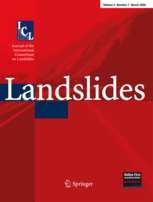
Landslides
Scope & Guideline
Advancing the Frontiers of Geotechnical Knowledge
Introduction
Aims and Scopes
- Landslide Hazard and Risk Assessment:
Research that develops and applies methodologies for assessing landslide hazards and risks, including probabilistic models and early warning systems. - Mechanisms and Processes of Landslides:
Studies focusing on the physical and geotechnical mechanisms behind landslides, including detailed analyses of failure modes and triggering factors. - Remote Sensing and Monitoring Techniques:
Innovative applications of remote sensing technologies, including InSAR and UAVs, for monitoring landslide activity and deformation over time. - Landslide Mitigation and Management:
Exploration of engineering solutions and management strategies aimed at reducing landslide risks and enhancing community resilience. - Climate Change and Landslide Dynamics:
Investigations into the effects of climate variability, including rainfall patterns and temperature fluctuations, on landslide occurrence and behavior. - Geological and Geospatial Analysis:
Utilization of geological and geospatial data to evaluate landslide susceptibility and to inform hazard mapping at various scales.
Trending and Emerging
- Machine Learning and AI in Landslide Prediction:
The application of machine learning and artificial intelligence techniques for predicting landslide occurrences and assessing risk has surged, showcasing the integration of computational methods in geosciences. - Integrated Multi-Hazard Assessment:
A growing trend towards assessing landslide risks in conjunction with other natural hazards, such as floods and earthquakes, emphasizing a more holistic view of environmental risks. - Real-Time Monitoring and Early Warning Systems:
The development of real-time monitoring systems using IoT and remote sensing technologies is gaining traction, facilitating timely responses to landslide threats. - Impact of Climate Change on Landslide Dynamics:
Increasing attention is being paid to how climate change influences landslide frequency and intensity, with studies focusing on altered rainfall patterns and temperature effects. - Sustainable Practices and Mitigation Strategies:
Research is increasingly focusing on sustainable engineering solutions and nature-based approaches to mitigate landslide risks, reflecting a growing concern for environmental impacts. - Advanced Numerical Modeling Techniques:
There is a notable rise in sophisticated numerical modeling approaches, such as the Material Point Method (MPM) and Discrete Element Modeling (DEM), which enhance the understanding of landslide mechanics.
Declining or Waning
- Traditional Statistical Models for Landslide Prediction:
The reliance on conventional statistical approaches for landslide prediction seems to have diminished as more advanced machine learning techniques gain popularity. - Single-Factor Analysis of Landslide Triggers:
Research solely focused on individual triggers, such as rainfall, is becoming less common as studies increasingly adopt integrated approaches that consider multiple interacting factors. - Historical Case Studies without Novel Insights:
There is a noticeable decrease in publications that focus solely on historical landslide events without contributing new methodologies or insights into current challenges. - Basic Geological Surveys:
Basic geological assessments of landslide-prone areas are becoming less prevalent, possibly due to the move towards more sophisticated, multi-faceted analyses incorporating advanced technology.
Similar Journals
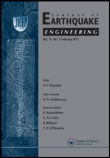
JOURNAL OF EARTHQUAKE ENGINEERING
Leading the way in earthquake resilience and safety.JOURNAL OF EARTHQUAKE ENGINEERING, published by TAYLOR & FRANCIS LTD, stands as a pivotal resource in the fields of Building and Construction, Civil and Structural Engineering, and Geotechnical Engineering. With an impressive Q1 ranking in multiple categories for 2023, this journal is instrumental for researchers, professionals, and students committed to advancing knowledge in earthquake engineering and its practical applications. As a platform that spans the years from 1997 to 2024, it highlights significant contributions to safety, risk, reliability, and quality in engineering practices. While the journal operates on a subscription basis, its highly regarded articles, bolstered by robust Scopus rankings—such as rank #46 in Building and Construction—underscore its credibility and influence in shaping standards and methodologies within the discipline. Promoting innovative and evidence-based approaches, the JOURNAL OF EARTHQUAKE ENGINEERING is essential reading for anyone engaged in the science and technology of earthquake-resistant structures.

Riset Geologi dan Pertambangan
Championing open access to vital geological research.Riset Geologi dan Pertambangan is an esteemed open-access journal published by the Indonesian Institute of Sciences, R&D Centre Biology, dedicated to advancing research in the fields of geology and mining. With an ISSN of 0125-9849 and an E-ISSN of 2354-6638, this journal has been fostering the dissemination of knowledge since 2005, ensuring that critical findings are accessible to a global audience. The journal serves as an important platform for researchers, professionals, and students to share innovative research, methodologies, and case studies that contribute to sustainable mining practices and geological advancements. By promoting interdisciplinary collaboration and the latest developments in the field, Riset Geologi dan Pertambangan plays a vital role in shaping the future of geology and mining research, particularly within the Southeast Asian context.

Frontiers in Earth Science
Fostering Interdisciplinary Insights for a Greener TomorrowFrontiers in Earth Science is a leading open-access journal published by FRONTIERS MEDIA SA, based in Switzerland. With its ISSN N/A and E-ISSN 2296-6463, this journal has firmly established itself in the realm of Earth and Planetary Sciences, evidenced by its exceptional Q1 ranking in the 2023 category of Earth and Planetary Sciences (miscellaneous) and a solid position of Rank #66/195 in Scopus, placing it in the 66th percentile among its peers. Since its inception in 2013, Frontiers in Earth Science has embraced the open access model, promoting widespread dissemination and accessibility of research findings. The journal covers a broad scope, including areas such as geology, meteorology, oceanography, and environmental science, fostering interdisciplinary communication and advancement. Researchers, professionals, and students looking to stay at the forefront of Earth science research will find an invaluable resource in this journal, which not only curates high-quality research but also supports innovative and impactful studies that address the pressing challenges facing our planet today.
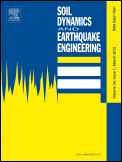
SOIL DYNAMICS AND EARTHQUAKE ENGINEERING
Bridging Disciplines for a Safer, More Resilient FutureSOIL DYNAMICS AND EARTHQUAKE ENGINEERING is a premier academic journal published by ELSEVIER SCI LTD, focusing on the intersection of civil and structural engineering, geotechnical engineering, and soil science. Since its inception in 1986, the journal has established itself as a critical resource for advancing knowledge in these fields over nearly four decades, with a remarkable Q1 ranking in 2023 across multiple categories, including Civil and Structural Engineering, Geotechnical Engineering, and Soil Science. The journal’s impactful research, reflected in its high Scopus ranks, serves as a vital reference for both professionals and academics dedicated to understanding soil dynamics and mitigating earthquake hazards. Although it currently does not offer open access, the journal's rigorous peer-review process ensures that published articles provide substantial contributions to the understanding of soil behavior under seismic conditions. Whether you are a researcher, a practitioner, or a student, SOIL DYNAMICS AND EARTHQUAKE ENGINEERING offers essential insights and innovative methodologies pivotal for advancing your work in soil dynamics and earthquake engineering.

Seismic Instruments
Connecting researchers to the forefront of geophysical instrumentation.Seismic Instruments is a prestigious academic journal dedicated to advancing the field of geophysical instrumentation and its applications in seismic studies. Published by PLEIADES PUBLISHING INC, this journal serves as a crucial resource for researchers, professionals, and students interested in the development, evaluation, and deployment of seismic instrumentation technologies. Although it does not currently offer open access, it provides a comprehensive platform for high-quality research articles, reviews, and technical notes that explore the latest innovations and findings in seismic studies. With an ISSN of 0747-9239 and an E-ISSN of 1934-7871, Seismic Instruments aims to foster collaboration and knowledge exchange among the global academic community, emphasizing the importance of instrumentation in understanding seismic activity and its implications for engineering, environmental science, and hazard mitigation.

Environmental Earth Sciences
Unveiling the complexities of our planet through interdisciplinary studies.Environmental Earth Sciences is a prestigious journal published by Springer, dedicated to advancing knowledge in the multifaceted fields of Earth Sciences, including Earth-Surface Processes, Environmental Chemistry, Geology, and Soil Science. With an ISSN of 1866-6280 and an E-ISSN of 1866-6299, this journal occupies a notable position in the academic landscape, consistently ranked in the Q2 category across multiple disciplines in 2023. It supports open access to foster wider dissemination of impactful research, enhancing visibility and accessibility for authors and readers alike. The journal's ongoing commitment to publishing innovative studies and reviews makes it an essential resource for researchers, professionals, and students alike. With a strong focus on addressing contemporary environmental challenges, Environmental Earth Sciences invites contributions that are both original and interdisciplinary, making a significant impact in understanding Earth dynamics and sustainability.
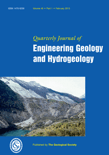
Quarterly Journal of Engineering Geology and Hydrogeology
Connecting Researchers and Professionals in Earth Sciences.The Quarterly Journal of Engineering Geology and Hydrogeology, published by GEOLOGICAL SOC PUBL HOUSE, stands as a crucial resource in the realms of Earth and Planetary Sciences, Geology, and Geotechnical Engineering. With an ISSN of 1470-9236 and its E-ISSN 2041-4803, this esteemed journal has been committed to disseminating high-quality research from its inception in 2001 through to 2024. Although it operates under traditional subscription access, the journal remains dedicated to providing a platform for rigorous scientific discourse and knowledge exchange. In 2023, it was recognized with a Q3 category rank across multiple disciplines, reflecting its growing influence and solid standing; it ranks #105 out of 321 in Earth and Planetary Sciences: Geology, and #97 out of 229 in Geotechnical Engineering and Engineering Geology. The journal aims to bridge the gap between theoretical research and practical applications, making it an invaluable tool for researchers, professionals, and students eager to advance their knowledge in the interrelated fields of engineering geology and hydrogeology.
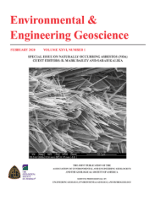
ENVIRONMENTAL & ENGINEERING GEOSCIENCE
Transforming Earth Sciences through Collaborative ResearchENVIRONMENTAL & ENGINEERING GEOSCIENCE, published by the Geological Society of America, Inc, is an esteemed peer-reviewed journal duly established to advance the fields of geotechnical engineering, environmental engineering, and broader earth sciences. With an ISSN of 1078-7275 and an E-ISSN of 1558-9161, this journal disseminates high-quality research and innovative methodologies that address pressing environmental issues and engineering challenges. As of 2023, it is classified in the Q3 category across various disciplines within earth and planetary sciences, highlighting its contribution and relevance within the academic community. The journal boasts an impactful trajectory, converging research from 1995 to 2024, and is strategically positioned to facilitate the exchange of ideas among researchers, practitioners, and students alike. With a commitment to fostering an understanding of geosciences in relation to environmental engineering, this journal is a valuable resource for those dedicated to developing sustainable solutions in our ever-evolving landscape. Readers can access published works through institutional libraries or relevant academic platforms, ensuring that groundbreaking research reaches all corners of the discipline.
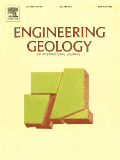
ENGINEERING GEOLOGY
Pioneering Research for Sustainable InfrastructureENGINEERING GEOLOGY, published by Elsevier, is a leading journal in the fields of Geology and Geotechnical Engineering, recognized by its prestigious Q1 ranking in both categories for 2023. With a deep focus on the application of geological principles to engineering practices, this journal plays a vital role in advancing knowledge and methodologies that enhance infrastructure development and environmental sustainability. Operating since 1965, the journal disseminates high-quality research, offering insights that foster innovation in geotechnical assessments and geological hazard evaluation. Researchers and professionals benefit from its rigorous peer-review process and impactful studies, bolstered by a strong Scopus ranking - #4 in Geology and #3 in Geotechnical Engineering, both placing it in the top 2% of its field. Although there is no Open Access option available, the journal facilitates significant academic discourse, making it an essential resource for anyone involved in the intersection of geology and engineering.

Geofizika
Bridging Ideas in Earth and Planetary SciencesGeofizika, an esteemed journal published by the Andrija Mohorovičić Geophysical Institute at the University of Zagreb, presents a significant platform for research in the fields of geophysics and Earth sciences. With an Open Access model established since 1984, this journal ensures that scientific knowledge is accessible to a broad audience, encouraging collaborations and the free exchange of ideas. Geofizika has steadily evolved through its converging years from 1989 to 1999 and has been active from 2003 to the present, reflecting its commitment to advancing geophysical research. The journal has been recognized for its contributions to Earth and Planetary Sciences and has acquired respectable ranks in various categories; notably, it holds a Q4 status in Geophysics as of 2023. Researchers, professionals, and students will find Geofizika a valuable resource for the latest discoveries and methodologies in geophysics, supporting the academic community in expanding the frontiers of knowledge in these vital scientific domains.